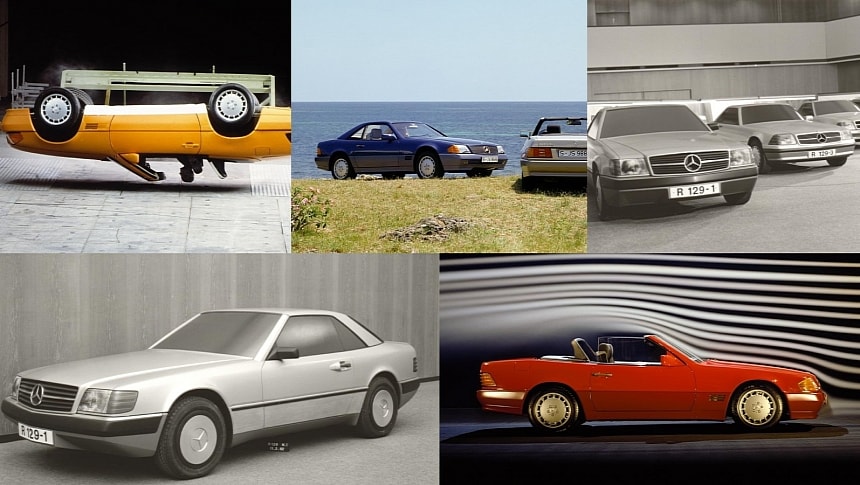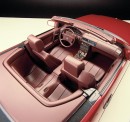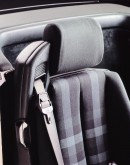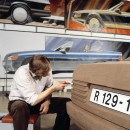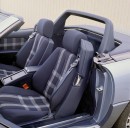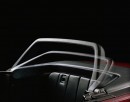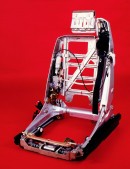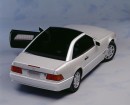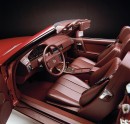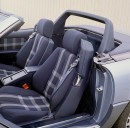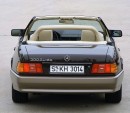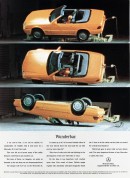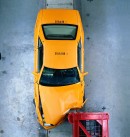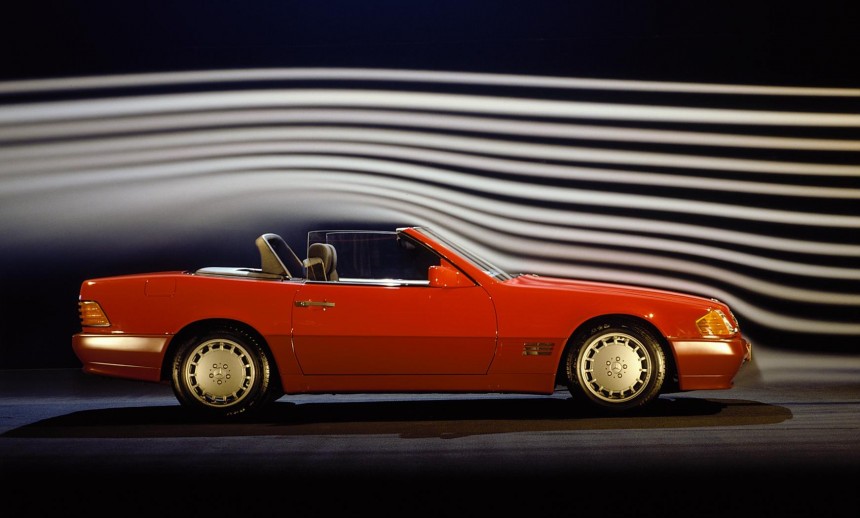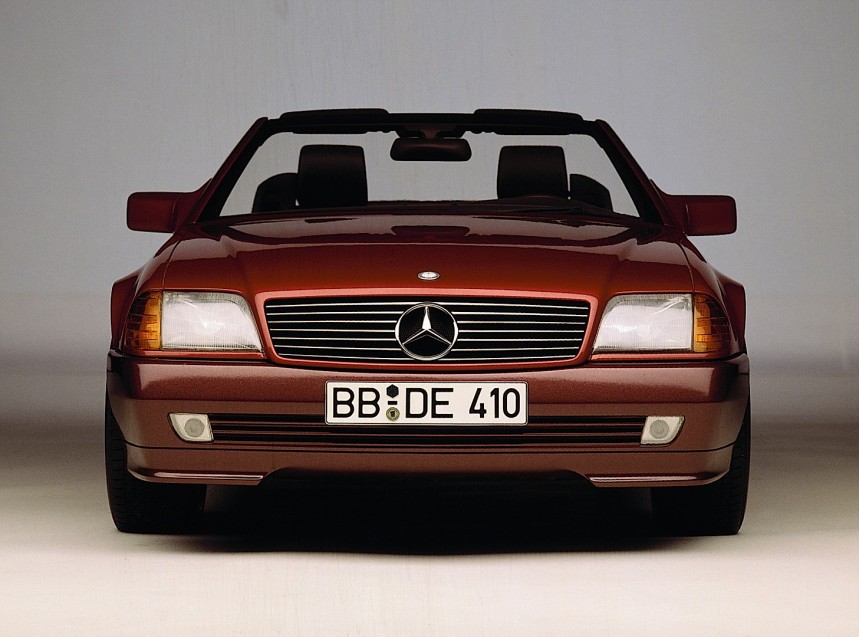While most people fetishize Porsches from the air-cooled era or the first BMW M cars from the '80s and '90s, some choose to idolize another premium German sports car, even though it is more of an open-top GT.
I'm talking about the fourth generation of the most misunderstood Mercedes-Benz model of all time, the SL Roadster. Known as the R129 in Mercedes-speak, with the R symbolizing its roadster segment, the fourth SL was unveiled exactly 35 years ago, in March 1989, at the Geneva Motor Show.
The model was conceptually brand-new, despite sharing a fair part of its underpinnings mostly with the W124 E-Class, while also borrowing some engines and tech from the W140 S-Class.
For over 72 years, the SL abbreviation has stood for 'Super Leicht' (Super Light), and even though not every generation of the model has been as lightweight in its segment as the first one, all of them have had a generous dose of sportiness included.
Since it was replacing the hugely successful but also long-in-the-tooth R107 SL, whose career spanned no less than 18 years, the fourth-generation Mercedes-Benz SL was developed more intensely than any other sports car. This happened despite the SL being a niche model, after all, not a mainstream sedan.
With that in mind, almost immediately after its reveal at the 1989 Geneva Motor Show, the Mercedes-Benz SL (R129) became a true hit, selling like cold lemonades on a hot day. All production slots filled up so quickly that some buyers were even willing to endure delivery wait times stretching over several years in the early '90s.
To give you an idea of how popular it was, the R129 outsold every convertible car on the market, no matter the price segment, and by 1993 it already held the record for the best-selling open-top car in history. Nowadays that title goes to the Mazda MX-5 Miata, which has always been about five times less expensive than the equivalent SL.
Believe it or not, the development of the Mercedes-Benz SL R129 started in the mid-1970s, when its predecessor, the long-lived R107, was only a few years old. Long gestation periods were the norm for premium cars back in the day, but the R129 had an unusually long one nevertheless.
Initially, the roadster was supposed to have a coupe brother, just like the R107 had the SLC, but those plans didn't go forward, with Mercedes-Benz choosing to develop a coupe version of the S-Class W140 instead later.
After almost half a decade of work, various working prototypes were already in advanced stages of development, with a near-production R129 SL model being tested in the aerodynamic wind tunnel in November 1981.
The car's somewhat wedge shape and smooth lines dreamed by legendary designer Bruno Sacco helped the end product ensure a drag coefficient of 0.32. This may not seem very slippery by today's standards, but four decades ago it was among the most aerodynamic production cars of any type.
On 17 October 1984, almost a decade after its development had started, the roadster finally received approval for its design, and on 10 December 1985 Mercedes-Benz made the decision to start the production of the R 129 in August 1988, still a few good months before its official reveal at the 1989 Geneva Motor Show.
A huge part of its immediate popularity is likely due to the technological tour de force it introduced, marking the dawn of a new era of 'over-engineering' for the Mercedes-Benz brand. Despite its platform being based on the shortened W124 E-Class chassis, the R129 SL borrowed engines and tech from the W140 S-Class, which was probably the most over-engineered passenger car at the time.
This is how it came to feature some crazy options when it was first introduced. Things like a remote-controlled interior rear-view mirror with memory and automatic locking of the door pockets. On top of it, both the steering wheels and the driver's seat automatically moved out of the way when you climbed inside.
With that in mind, an innovative automatic roll bar that could deploy in just 0.3 seconds was among the many standout tech and safety features. Unlike other convertibles before it, which either didn't have a roll bar at all or had unsightly fixed ones, the R129 SL had its classy lines unperturbed by such a feature until it needed it.
Despite being a mix of bits and bobs from various Mercedes-Benz models, some of the technology present in the model was bespoke and remained that way due to the car's segment.
For example, as the world's first car to be fitted with this, the three-point seat belts with seat belt retractors and belt tensioners, as well as the seat belt height adjusters and the associated head restraints adjustment were integrated into a single part. No less than 20 patents went into their development.
The R129 was also the first convertible to feature a wind deflector, which made the car a lot more comfortable to drive with the top down at high speed, even though this meant that the two bucket seats in the rear became even more unusable.
A lot of development work went into the fully automatic soft-top roof of the model. Its sophisticated frame kinematics were state of the art at the time, with no less than 17 limit switches being monitored by a dedicated ECU. A hardtop with a panoramic glass roof also premiered for the first time on the SL later in the production cycle.
Last, but definitely not least, an innovative pneumatic suspension option also premiered on the fourth-generation SL, one that is still used in a modernized form on the most expensive Mercedes-Benz models. Called the Adaptive Damping System (ADS), the tech adjusted the damping power individually on each wheel, delivering a comfortable yet sporty driving experience for something that wasn't meant to outhandle Porsches.
Since it was following in the footsteps of the highly successful R107 SL, which was produced for almost two decades without too many changes, the R129 had to be the best in its segment on almost every level.
In many ways, it was, especially since it had to battle another gorgeous and innovative German GT launched in the same year, the BMW 8 Series E31.
Among its offerings, the top-tier twelve-cylinder models, namely the 600 SL/SL 600, delivering 389 (HP (394 PS), and the mighty SL 73 AMG, equipped with a 7.3-liter V12 engine producing 518 HP (525 PS), achieved legendary status.
The model's engine lineup changed quite a bit over its production cycle, but the SL 600, powered by the world's lightest V12 engine at the time, was always the top dog.
In total, 204,940 units of the R129 SL were built from late 1988 until July 2001, when the equally innovative but more mainstream R230 series replaced it. Among them, a red 500 SL was made famous by Princess Diana, who bought it in 1991 to replace her Jaguar XJS. The controversy of being the first member of the British Royal family to use a foreign car made the SL even more famous, which is why until the Mazda MX-5 took its place, it was for many years the best sold convertible on the planet.
The model was conceptually brand-new, despite sharing a fair part of its underpinnings mostly with the W124 E-Class, while also borrowing some engines and tech from the W140 S-Class.
For over 72 years, the SL abbreviation has stood for 'Super Leicht' (Super Light), and even though not every generation of the model has been as lightweight in its segment as the first one, all of them have had a generous dose of sportiness included.
Since it was replacing the hugely successful but also long-in-the-tooth R107 SL, whose career spanned no less than 18 years, the fourth-generation Mercedes-Benz SL was developed more intensely than any other sports car. This happened despite the SL being a niche model, after all, not a mainstream sedan.
With that in mind, almost immediately after its reveal at the 1989 Geneva Motor Show, the Mercedes-Benz SL (R129) became a true hit, selling like cold lemonades on a hot day. All production slots filled up so quickly that some buyers were even willing to endure delivery wait times stretching over several years in the early '90s.
To give you an idea of how popular it was, the R129 outsold every convertible car on the market, no matter the price segment, and by 1993 it already held the record for the best-selling open-top car in history. Nowadays that title goes to the Mazda MX-5 Miata, which has always been about five times less expensive than the equivalent SL.
R&D Frenzy
Initially, the roadster was supposed to have a coupe brother, just like the R107 had the SLC, but those plans didn't go forward, with Mercedes-Benz choosing to develop a coupe version of the S-Class W140 instead later.
After almost half a decade of work, various working prototypes were already in advanced stages of development, with a near-production R129 SL model being tested in the aerodynamic wind tunnel in November 1981.
The car's somewhat wedge shape and smooth lines dreamed by legendary designer Bruno Sacco helped the end product ensure a drag coefficient of 0.32. This may not seem very slippery by today's standards, but four decades ago it was among the most aerodynamic production cars of any type.
On 17 October 1984, almost a decade after its development had started, the roadster finally received approval for its design, and on 10 December 1985 Mercedes-Benz made the decision to start the production of the R 129 in August 1988, still a few good months before its official reveal at the 1989 Geneva Motor Show.
Avant-garde Technology
This is how it came to feature some crazy options when it was first introduced. Things like a remote-controlled interior rear-view mirror with memory and automatic locking of the door pockets. On top of it, both the steering wheels and the driver's seat automatically moved out of the way when you climbed inside.
With that in mind, an innovative automatic roll bar that could deploy in just 0.3 seconds was among the many standout tech and safety features. Unlike other convertibles before it, which either didn't have a roll bar at all or had unsightly fixed ones, the R129 SL had its classy lines unperturbed by such a feature until it needed it.
Despite being a mix of bits and bobs from various Mercedes-Benz models, some of the technology present in the model was bespoke and remained that way due to the car's segment.
For example, as the world's first car to be fitted with this, the three-point seat belts with seat belt retractors and belt tensioners, as well as the seat belt height adjusters and the associated head restraints adjustment were integrated into a single part. No less than 20 patents went into their development.
The R129 was also the first convertible to feature a wind deflector, which made the car a lot more comfortable to drive with the top down at high speed, even though this meant that the two bucket seats in the rear became even more unusable.
A lot of development work went into the fully automatic soft-top roof of the model. Its sophisticated frame kinematics were state of the art at the time, with no less than 17 limit switches being monitored by a dedicated ECU. A hardtop with a panoramic glass roof also premiered for the first time on the SL later in the production cycle.
Last, but definitely not least, an innovative pneumatic suspension option also premiered on the fourth-generation SL, one that is still used in a modernized form on the most expensive Mercedes-Benz models. Called the Adaptive Damping System (ADS), the tech adjusted the damping power individually on each wheel, delivering a comfortable yet sporty driving experience for something that wasn't meant to outhandle Porsches.
One of 1989's Heroes
In many ways, it was, especially since it had to battle another gorgeous and innovative German GT launched in the same year, the BMW 8 Series E31.
Among its offerings, the top-tier twelve-cylinder models, namely the 600 SL/SL 600, delivering 389 (HP (394 PS), and the mighty SL 73 AMG, equipped with a 7.3-liter V12 engine producing 518 HP (525 PS), achieved legendary status.
The model's engine lineup changed quite a bit over its production cycle, but the SL 600, powered by the world's lightest V12 engine at the time, was always the top dog.
In total, 204,940 units of the R129 SL were built from late 1988 until July 2001, when the equally innovative but more mainstream R230 series replaced it. Among them, a red 500 SL was made famous by Princess Diana, who bought it in 1991 to replace her Jaguar XJS. The controversy of being the first member of the British Royal family to use a foreign car made the SL even more famous, which is why until the Mazda MX-5 took its place, it was for many years the best sold convertible on the planet.
